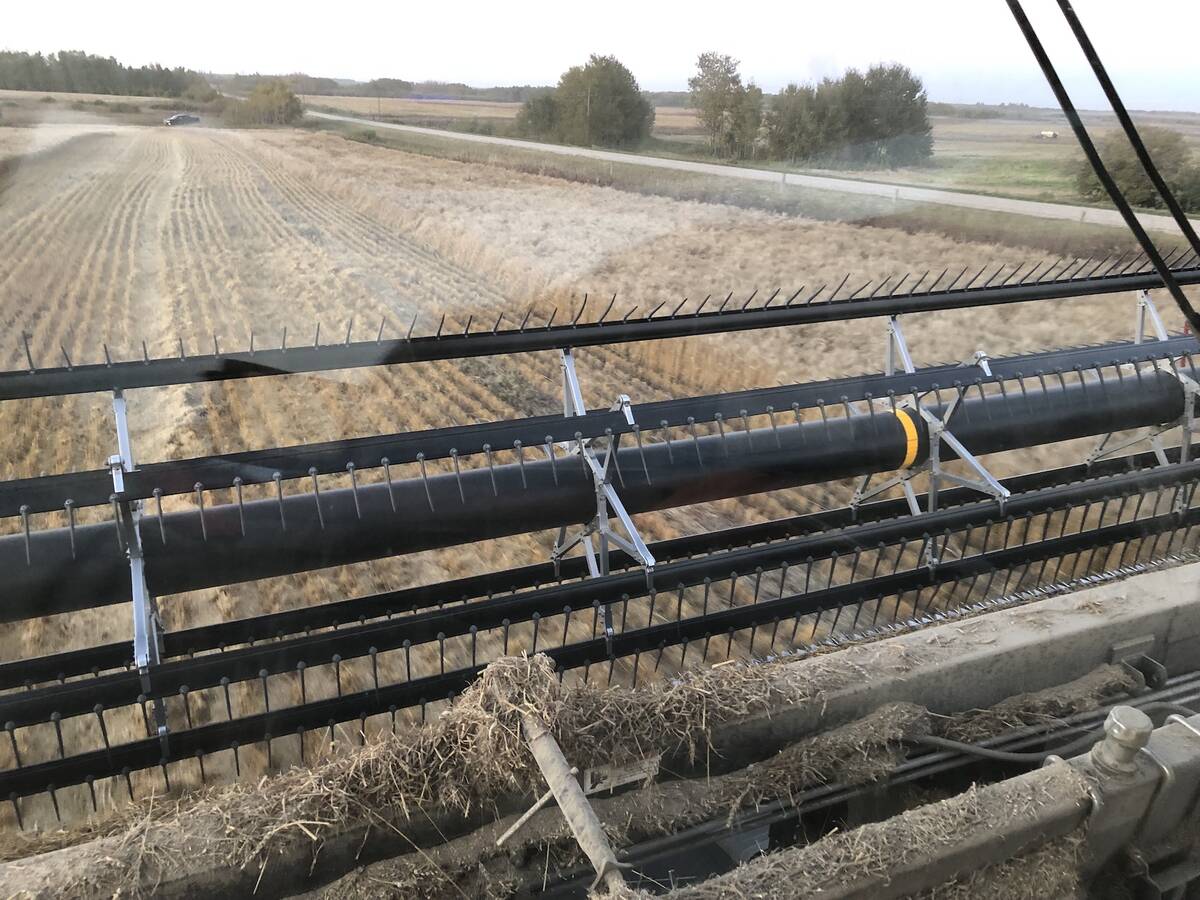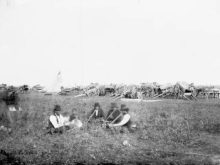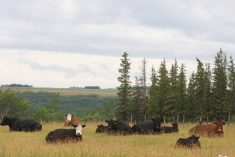“Life, uh… finds a way.”
Those words, uttered by actor Jeff Goldblum in the 1993 science fiction blockbuster “Jurassic Park,” leapt to mind last week with word that a genetically modified wheat had been found along a field access road in southern Alberta.
Goldblum’s character was blue-skying about exactly how a cohort of all-female dinosaurs had managed to reproduce, putting in doubt the theoretical theme park’s much-ballyhooed biosecurity measures and reassurances that it wasn’t setting up another dawn of the dinosaurs.
In a similar manner, it seems federal regulators are puzzled by just how life — in this case in the form of a known glyphosate-tolerant gene — managed to find a way into an as-yet unidentified wheat varietal.
Read Also

The poetic epic of Manitoba farming 2025
Former Manitoba Co-operator editor John Morriss returns for his yearly poetic sum up of the farming year and look ahead into 2026.
The initial discovery happened last summer, but it’s taken until now to get what was simply a hunch on the part of a sharp-eyed commercial spray applicator confirmed and reconfirmed.
In the wake of CFIA’s technical briefing however, there are more questions than answers.
No one is exactly sure what this wheat is. The CFIA, which also operates the Variety Registration Office, would ordinarily be the go-to source for determining this, but officials admit they’re stumped. The agency has about 450 varieties of wheat — and their genetic fingerprints — on file, but cross-referencing to this database has failed to turn up a match.
Monsanto, the company that developed the gene in question, has been quick to verify this information, pointing out that all the varieties it worked on years back were either AAFC varieties or Monsanto’s own varieties, both of which the CFIA was familiar with and should have had no trouble identifying.
Officials stress that this was actually a development with positive implications as it means this unidentified wheat is not present in the Canadian seed system. Earlier issues with the flax sector, after the unapproved variety Triffid was found to be present in seed, required a total reboot of seed production dubbed the “reconstituted flaxseed program” in an effort to regain entry to European markets.
It does, however, make tracking down exactly what’s happened more difficult. Officials may not yet know how it all came about, but they hasten to add they’re not out of their element when it comes to dealing with the problem at hand. They know how to identify it now. They have its genetic fingerprint and can now tell if it’s mixed with other grain, so it can be found, identified and segregated.
Still, the biological questions this finding raises are fascinating to say the least.
How did it wind up in this unknown variety? Was it simply a question of outcrossing through windblown pollen? That’s theoretically possible, but unlikely. Measures such as planting buffer plots of non-GMO wheat are designed to trap the relatively heavy pollen close to the site, where any outcrosses could be destroyed.
So did it move into a variety? Or is this a variety from the early days of development that somehow wasn’t recorded and was never intended to be released, and therefore is now unidentifiable? And if that’s the case, how did it only appear now some 18 years after the final trials involving this particular trait?
It seems unlikely an annual crop such as wheat could survive year-after-year reseeding itself, though of course Mother Nature will always bat last.
Once it did find its way into nature, how did it then move as far as it did? CFIA officials say the closest test plots to the site of the finding were “hundreds of kilometres” away. Was it perhaps wildlife?
That could theoretically be possible as well, as another historic hot potato illustrates from another Canadian location — Agriculture and Agri-Food Canada’s Central Experimental Farm in Ottawa.
In late summer of 2012 researchers there were suddenly alarmed to realize geese were consuming seeds from genetically modified wheat test plots and possibly flying away and depositing viable seeds on nearby fields.
Internal communication obtained by the Ottawa Citizen newspaper revealed a panicked bureaucracy attempting to quantify the risk level.
In the end their conclusion was that the risk was minimal. They concluded the amount of genetic material involved was minuscule and noted that as an annual crop, survival until next spring was very unlikely. But, it’s important to note, it’s not impossible.
It all underscores the vagaries of working with any living material and the resourcefulness of Mother Nature when it comes to the survival of that genetic material.
It also underscores the importance of ongoing efforts by the grain sector to negotiate tolerance levels for unapproved genetically modified crops to guide international trade that are higher than the impossible-to-achieve zero.
Without these sort of regulatory solutions, it seems Canadian farmers will continue to be vulnerable trade disruptions caused by these quirks of nature.















